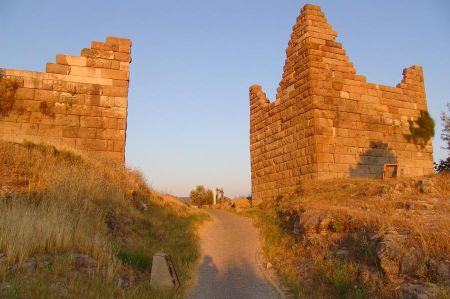Halicarnassus - characters and ancient wonder of the world
- Written by Portal Editor
Ancient writings found in the Greek port city of Pylos, so-called Linear B documents, date from the early 12th century BC.
Among other things, in originate of those the place Zephyria is mentioned, according to the traveler Strabo, Zephyria is the old, original name of Halicarnassus, it is assumed that Zephyros is the Mycenaean name of this Bronze Age settlement in the area of the later Halicarnassus. In other words: As early as the 12th century BC, female slaves were shipped from today's Bodrum to today's small town Pylos, which was even recorded in writing.
Linear script in the Bronze Age Minoan culture
Linear B is the syllabary of the Mycenaean culture of Greece. It was growing from the 15th century BC. until the 12th century BC starting from Knossos on Crete and the Greek mainland. It´s usage is attested from the periods of the Bronze Age Minoan civilization.
About 90 syllable characters, 160 characters with word meanings and various numerals are known. It was written from left to right. The font became known in 1878 through a find in Crete. The designation "Linear B" was coined by Sir Arthur Evans, the excavator of Knossos, and describes the appearance of the characters scratched with individual lines in clay tablets. Because of the close relationship with the linear script A, found on clay tablets and similar finds were initially thought to be Minoan.
Halicarnassus made famous by the mausoleum
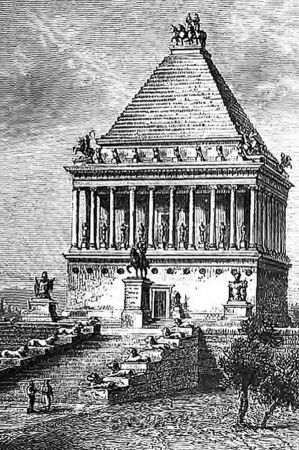 A few kilometers west-northwest of Halicarnassus a necropolis with 48 chamber tombs was discovered near Müsgebi, the Mycenaean ceramics from the 14th to 12th centuries BC which contained other Mycenaean grave goods too. It is likely that Mycenaean Greeks also lived in the vicinity of Halicarnassus; A Mycenaean settlement - similar to Miletus and probably Iasos - is also not excluded.
A few kilometers west-northwest of Halicarnassus a necropolis with 48 chamber tombs was discovered near Müsgebi, the Mycenaean ceramics from the 14th to 12th centuries BC which contained other Mycenaean grave goods too. It is likely that Mycenaean Greeks also lived in the vicinity of Halicarnassus; A Mycenaean settlement - similar to Miletus and probably Iasos - is also not excluded.
Halicarnassus gained fame in classical antiquity by the mausoleum of Halicarnassus, which is counted among the classical seven wonders of the world. His best-known son is Herodotus, the "father of historiography". The poet Heraclitus of Halicarnassus and the historian Dionysius of Halicarnassus also come from this city.
Since the year 480 BC Artemisia I, daughter of Lygdamis, ruled Halicarnassus as guardian of her son Pisindelis, which also included the islands of Kos and Nisyros.
Artemisia - ruler of Halicarnassus
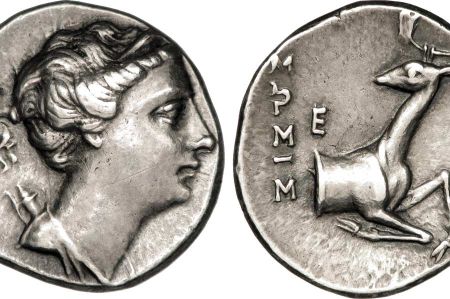 After all, Artemisia took part in the Greek campaign of Xerxes with five ships on the side of the Persians. She advised Xerxes, who valued her cleverness and determination, against the sea battle at Salamis. In the 5th century BC Halicarnassus belonged to the Attic League.
After all, Artemisia took part in the Greek campaign of Xerxes with five ships on the side of the Persians. She advised Xerxes, who valued her cleverness and determination, against the sea battle at Salamis. In the 5th century BC Halicarnassus belonged to the Attic League.
From 392 BC Hekatomnos of Mylasa ruled Caria as a Persian satrap. With him the dynasty of the Hecatomnids was founded, which was continued by all his children. He had three sons, Maussolos, Idrieus and Pixodaros; and two daughters, Artemisia II and Ada. Both were married to their brothers Maussolos and Idrieus, respectively. Maussolos succeeded his father as ruler and made Halicarnassus the capital of his empire instead of the old Mylasa. In addition to a port, which was only accessible by a narrow canal, he had walls and watchtowers built in order to be secured both on land and at sea. A massive palace ensured him a view in all directions.
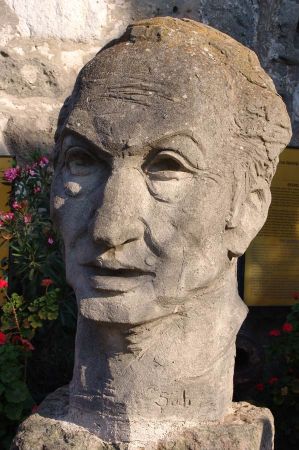 Since Maussolos, despite his Carian descent, had a great interest in Greek culture, he had a Greek theater and a temple built for Ares in addition to the military improvements in the city. After his death, his wife Artemisia II took control of Caria and Rhodes. She called the most famous Greek artists to Halicarnassus to furnish the grandiose tomb for Maussolos, the mausoleum of Halicarnassus. Among other things, artists such as Leochares, Timotheos, Skopas or Bryaxis contributed to this “wonder of the world”. The tomb had a base of 33 m × 39 m, a cella with a ring hall made of 36 Ionic columns rose above it, a pyramid formed the roof, on which stood a four-horse carriage and on top the figures of Maussolos and Artemisia (friezes and the statue of Maussolos can be seen today in the British Museum in London). 351 BC After the death of Artemisias her brother Idrieus ascended the throne. Idrieus was born after his death in 344 BC. Replaced as regent by his wife Ada until her remaining brother Pixodarus in 340 BC appropriated the throne. His son-in-law Orontobates received after the death of his father-in-law in 335 BC. The satrapy Caria of Darius III. and thus ended the rule of the Hecatomnids.
Since Maussolos, despite his Carian descent, had a great interest in Greek culture, he had a Greek theater and a temple built for Ares in addition to the military improvements in the city. After his death, his wife Artemisia II took control of Caria and Rhodes. She called the most famous Greek artists to Halicarnassus to furnish the grandiose tomb for Maussolos, the mausoleum of Halicarnassus. Among other things, artists such as Leochares, Timotheos, Skopas or Bryaxis contributed to this “wonder of the world”. The tomb had a base of 33 m × 39 m, a cella with a ring hall made of 36 Ionic columns rose above it, a pyramid formed the roof, on which stood a four-horse carriage and on top the figures of Maussolos and Artemisia (friezes and the statue of Maussolos can be seen today in the British Museum in London). 351 BC After the death of Artemisias her brother Idrieus ascended the throne. Idrieus was born after his death in 344 BC. Replaced as regent by his wife Ada until her remaining brother Pixodarus in 340 BC appropriated the throne. His son-in-law Orontobates received after the death of his father-in-law in 335 BC. The satrapy Caria of Darius III. and thus ended the rule of the Hecatomnids.
Fall of Halicarnassus by Alexander the Great
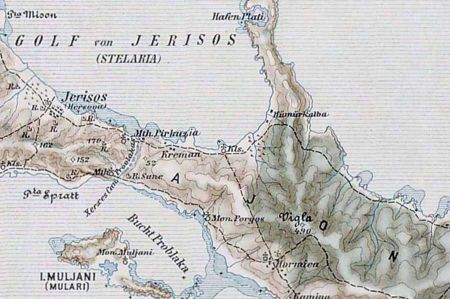 334 BC BC Halicarnassus was the last bulwark of the Persians against the conquest of Alexander the Great in Asia Minor. Memnon of Rhodes expanded the city and port as the base of operations for the Persian fleet. By a decree of the great king Dareios III. he was now commander in chief. Alexander had siege towers and wall breakers used against the city. After stubborn fighting, Memnon's troops withdrew to the port area and defended the base until the following year, 333 BC. The neutralization of Halicarnassus for Alexander meant the conclusion of the conquest of the west coast of Asia Minor.
334 BC BC Halicarnassus was the last bulwark of the Persians against the conquest of Alexander the Great in Asia Minor. Memnon of Rhodes expanded the city and port as the base of operations for the Persian fleet. By a decree of the great king Dareios III. he was now commander in chief. Alexander had siege towers and wall breakers used against the city. After stubborn fighting, Memnon's troops withdrew to the port area and defended the base until the following year, 333 BC. The neutralization of Halicarnassus for Alexander meant the conclusion of the conquest of the west coast of Asia Minor.
From about 280 BC to 200 BC Halicarnassus belonged to the Ptolemaic Empire.
With the expansion of the Seleucids and the subjugation of the Greek cities of Asia Minor, Rome was called into action. In the war against Antiochus III. Halicarnassus stood on the Roman side and thus retained his independence for several decades.
Since 129 BC BC Halicarnassus belonged to the Roman province of Asia.
Please read as well:
Mausoleum at Halicarnassus - Artemisia & King Maussolos
Myndos Gate to Halicarnassos today Bodrum
